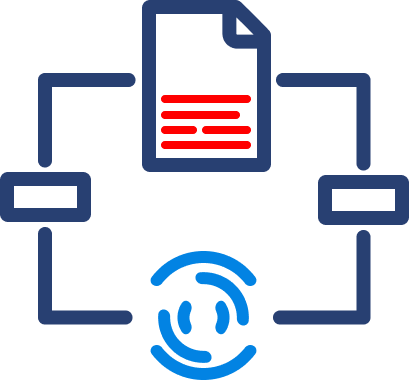How to Set Up Maxio
Maxio brings core financial operations into one platform to help SaaS companies uncover critical financial insights and unlock their next stage of growth.
How to Set Up Maxio: A Step-by-Step Guide
This guide will walk you through setting up Maxio for subscription billing, revenue recognition, invoicing, and financial reporting to help manage your business efficiently.
Step 1: Create a Maxio Account
- Go to Maxio’s website
- Visit Maxio and click "Get Started".
- Enter Business Information
- Provide your company name, email, and password.
- Select your business type (SaaS, B2B subscriptions, professional services, etc.).
- Verify Your Email
- Check your inbox for a confirmation email from Maxio.
- Click the link to activate your account and log in.
Step 2: Configure Business Settings
- Set Your Business Currency
- Go to Settings > Business Settings > Currency.
- Choose your default currency (USD, EUR, GBP, etc.).
- Enable multi-currency support if you have international customers.
- Configure Tax Settings
- Go to Settings > Taxes.
- Enable automated tax calculations (VAT, GST, Sales Tax).
- Connect with Avalara or Stripe Tax for global tax compliance.
Step 3: Set Up Subscription Plans & Pricing
- Go to Billing > Subscription Plans.
- Click "Create New Plan" and enter:
- Plan Name (e.g., "Growth Plan").
- Billing Frequency (monthly, yearly, usage-based).
- Price per cycle (e.g., $99 per month).
- Free Trial Period (if applicable).
- Setup Fees (if any).
- Click Save & Publish.
- Add Add-ons & Discounts (Optional)
- Go to Product Catalog > Add-ons & Coupons.
- Create additional charges or promotional discounts.
Step 4: Integrate Payment Gateways
- Go to Settings > Payment Gateways.
- Select and connect a payment provider:
- Stripe (recommended for global payments).
- Authorize.Net, PayPal, Braintree, or Adyen.
- Enable Payment Methods
- Credit/Debit Cards
- ACH Bank Transfers
- Wire Payments (if applicable)
- Test a Transaction to verify successful payments.
Step 5: Set Up Automated Invoicing & Revenue Recognition
- Enable Automatic Invoicing
- Go to Settings > Invoicing.
- Choose invoice frequency and due dates.
- Enable auto-email invoices to customers.
- Enable Revenue Recognition (ASC 606 Compliance)
- Go to Revenue Recognition > Accounting Settings.
- Select recognition schedules (daily, monthly, quarterly).
- Enable deferred revenue tracking for compliance.
Step 6: Set Up Dunning & Payment Recovery
- Go to Settings > Dunning Management.
- Configure failed payment handling:
- Retry failed payments every 3-5 days.
- Send automated reminder emails for overdue invoices.
- Enable card expiration notifications.
- Monitor Recovery Reports to reduce involuntary churn.
Step 7: Integrate Accounting & CRM Tools
- Go to Settings > Integrations.
- Connect Maxio with:
- QuickBooks or Xero (for accounting automation).
- NetSuite or Sage Intacct (for enterprise finance teams).
- Salesforce or HubSpot (to sync customer subscriptions).
- Configure automatic transaction sync for accurate financials.
Step 8: Configure Customer Self-Service Portal
- Enable the Customer Portal
- Go to Settings > Customer Portal.
- Allow customers to view invoices, update billing, and change plans.
- Customize Branding
- Add your company logo and color scheme for consistency.
- Configure email notifications for billing and renewals.
Step 9: Set Up Analytics & Revenue Reporting
- Go to Reports > Subscription & Revenue Metrics.
- Monitor key financial KPIs:
- Monthly Recurring Revenue (MRR).
- Churn Rate and Retention Metrics.
- Revenue Forecasting and Growth Projections.
- Set Up Automated Reports
- Schedule weekly or monthly revenue reports for finance teams.
Step 10: Test & Deploy Your Subscription Billing System
- Run a Test Subscription
- Purchase a test plan using a dummy payment method.
- Check for correct invoicing, tax calculations, and payment processing.
- Verify Financial Reports
- Ensure deferred revenue and MRR calculations are accurate.
- Launch Live Billing System
- Activate real customer subscriptions and track revenue.
Final Checks Before Full Deployment
✔ Confirm payment gateway integration and test transactions.
✔ Validate subscription upgrades, downgrades, and cancellations.
✔ Verify automated invoicing and tax settings.
✔ Enable dunning and payment recovery workflows.
✔ Monitor revenue analytics and compliance reports.
Other
Maxio
Maxio brings core financial operations into one platform to help SaaS companies uncover critical financial insights and unlock their next stage of growth.
Other
Avalara
Avalara offers pre-built connectors and custom integrations into leading accounting, ERP, ecommerce and other business applications making tax compliance easy for customers.
Other
Clerky
Most popular online service for startup legal paperwork, including Delaware C corporation incorporation. Recommended by the most startup attorneys.
Our Services
Full Send Finance exists to elevate your data.
Outsourced Accounting
With a delightful blend of technology and human wizardry - we help establish your accounting ecosystem, clean up current ones, and manage them on an ongoing basis.
Financial Planning & Analysis
We provide beautiful financial reporting and dashboarding to help you have financial clarity within your business at any point in time.
Fractional & Technical Accounting
We are human experts in accounting. We love solving problems and providing our clients with some much needed confidence that a solution exists.

Data Automation
We take your manual data exports, uploads, and reformats and turn them into a steady stream of consistent data - wherever you need it.
Data Analytics
We take your dusty excel report or dashboard and turn it into a multi-dimensional tool that allows you to cut the data however you like.

Fractional Data
From data strategy and team education to one-off data architecture projects, we support your temporary projects as your needs evolve.


